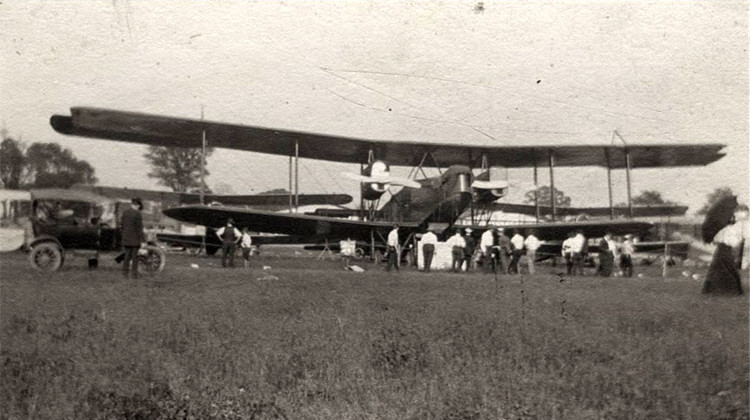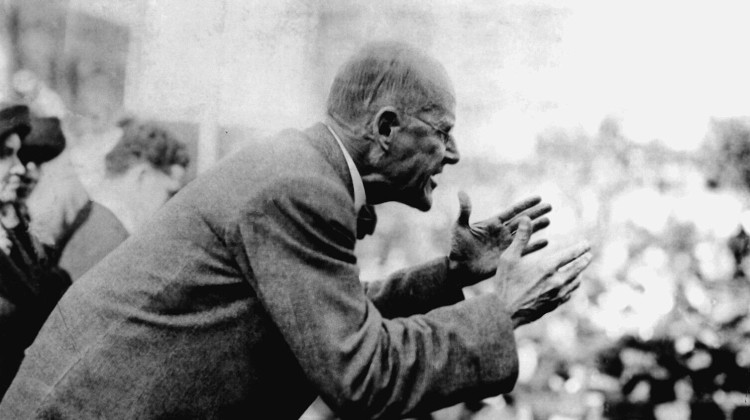
This Handley Page bomber, on display at the Indianapolis Motor Speedway, was used to recruit airplane mechanics. Handley Page was a British builder, and this plane was the first one built in the United States.
Indiana Historical SocietyINDIANAPOLIS (AP) — A new state historical marker pays homage to the role the Indianapolis Motor Speedway and adjacent areas played in keeping the nation's pilots flying during World War I.
About 50 people attended Tuesday's dedication of the marker by the Indiana Historical Bureau after rain drove most of the ceremony indoors. The new marker commemorates the town of Speedway's wartime aviation repair depot.
The U.S. Army opened the depot in early 1918 to capitalize on the area's strategic position near military airfields, railroads, and industry. The famed auto race was canceled during the war and its sprawling site provided hangars and a flight test field for pilots.
Ground crews worked at sites across Speedway to repair, modify and test aircraft and their engines in what became an innovative wartime aviation hub.
Marker Text
Side One:
U.S. entry in WWI spurred rapid aviation expansion in the country. Due to city's strategic location to military airfields, railroads, and industry, U.S. Army opened an aviation repair depot here in early 1918. 809th, 810th, 811th, and 821st Aero Squadrons repaired, modified, and tested training aircraft and engines. The Speedway provided hangars and a flight test field.
Side Two:
Speedway area became an innovative aviation hub during WWI. Work at the depot increased pilot safety and aircraft structural integrity. Italian Pomilio Bros. Corp. developed aircraft here for the Liberty engine produced by Nordyke & Marmon with parts by Allison Experimental Co. The depot repaired 313 planes and 350 engines in 1918. By fall 1920 it ceased operations.
 DONATE
DONATE









 Support WFYI. We can't do it without you.
Support WFYI. We can't do it without you.